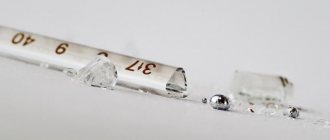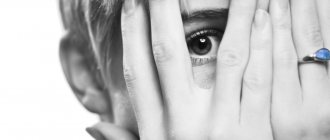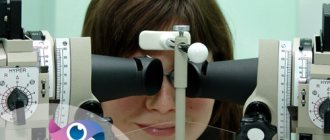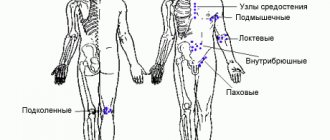Causes
Itching, redness, cracking of the surface, extremely uncomfortable sensations - any of us are familiar with this condition of the epidermis.
For some, a noticeable deterioration is associated with hormonal levels, for others - with cold weather (they often talk about an allergy to cold, although in its pure form it is rare). Only a thorough and comprehensive diagnosis will help answer the reason for the deterioration of the condition. Many patients come with the question: if the skin of the body is very dry, then what should be done? What means to choose to get rid of the problem? However, the doctor will first of all find out why it occurred.
There can be many “triggers”. Let's list some of them:
- Exposure to external factors, including sunlight, air conditioning, temperature changes, and so on.
- Age-related changes (senile xerosis).
- Lack of vitamins, including A, E and C. They are often called the “secret of youth,” although there is no secret in their action. These important components fight antioxidants, maintain the balance of the epidermis and its tone.
- The innate physiological characteristics of the body often answer the question of why the skin becomes dry. This is a so-called constitutional disorder, which is often observed in childhood, when parents of children aged 2 years and older pay attention to poor epidermis.
- Xeroderma is a pathological situation; defects are mainly visible on the face and flexor surfaces. In this condition, the permeability of the epidermal barrier is impaired.
- Allergic reactions.
- Various diseases, including fungal ones.
- Dermatoses also become a factor in the patient developing dryness, and the causes are called differently: contact and allergic, ichthyosis, psoriasis, but all of this is one class of pathologies.
Causes of dry facial skin
Dry skin is characterized by tightness, flaking, dull tone, regular irritation and a finely porous structure. These features are genetic and associated with insufficient production of sebum and low activity of the sebaceous glands.
This is why dry skin has a very thin hydrolipid barrier. It consists of water, fatty acids and in normal condition protects the skin from negative factors. But in the dry type, this barrier functions poorly, which leads to negative consequences: disruption of the lipid and water barrier, weak functioning of the sweat and sebaceous glands, and a slightly acidic pH reaction (acid-base state).
Despite the fact that your skin type is given at birth, you can choose the right skin care products and get rid of the negative features inherent in dry skin.
Signs
It would seem that the fact that you have difficulties with the epidermis is understandable without additional explanation. However, there are a number of symptoms that are often not paid attention to, while they serve as a kind of “bell” that you need to check your health:
- after washing there is a feeling that the face, body or hands are “tight”;
- red spots appear;
- itching begins, which causes serious discomfort;
- Cracks and scratches easily form on the surface.
If you have very dry skin on your body, your doctor will tell you what to do. Unfortunately, often a simple change of cosmetics is not enough; comprehensive measures must be taken: change your diet, give up bad habits, monitor which products and materials may cause unpleasant reactions, identify medications that require caution when taken.
Symptoms
Most often, dry skin is a temporary problem that only bothers you during a certain season, but it can last a lifetime. Symptoms of xerosis depend on your general health, age, where you live, and how much time you spend outdoors. Possible symptoms include:
- Feeling of tightness of the skin, especially after a bath.
- The skin is wrinkled and dehydrated.
- The skin looks rough instead of smooth.
- The itching is disturbing, sometimes very intense.
- Peeling of the skin - from slight to severe.
- Cracks in the skin, sometimes bleeding and painful.
- Redness of the skin, usually in limited areas.
Differences between dermis types
To choose the right caring cosmetics, you need to know what you are dealing with and what specific features you have. There are four types in total:
- dry;
- fat;
- combined;
- normal.
These characteristics are determined by genetics, but lifestyle, environmental factors and health play a huge role. To find out which epidermis you have, do a simple test. Clean your face with a mild cleanser, pat dry with a towel, and do not apply any cosmetic creams or serums. Assess the external shine after about an hour.
First type
After washing your face without using moisturizing ingredients, you may feel some tightness. When you blot with matting wipes, you notice that there are no traces of grease left on them. This means that you have dry skin on your body - the reasons, as we have already said, lie in genetics, but improper care and lifestyle usually aggravate the problems.
As a rule, the basis for their manifestation may be a lack of lipids; the protective layer on the surface becomes thinner and becomes permeable. Unfortunately, such features lead to the fact that with age, deeper and more pronounced wrinkles appear on the face, as the epidermis loses its plasticity and ability to replenish volume. Creases occur more easily and last longer.
Second type: normal
In the modern world, where we are influenced by dozens of unfavorable factors, it is not so easy to meet a person with this type. Even if the sebaceous glands are naturally balanced, many circumstances, including health conditions and the use of cosmetics, can disrupt the harmony. And in this case, the doctor hears the question, why is the skin on the face very dry? Normally, sebum secretion occurs evenly and there is no shine. As a rule, the pores are not enlarged, small, blood circulation is good, the complexion is even, the texture is smooth and silky, there is no inflammation or acne. The epidermis is not sensitive, but with age it usually becomes denser, easily injured, itching and peeling occur, areas whose condition causes concern. Then patients turn to a dermatologist or cosmetologist with the question of how to get rid of dryness.
Third type: fat
If, after performing a home test, you see that the cleaned surface begins to shine within an hour, and pronounced traces of grease remain on the matting paper, then you have this type. The reasons for increased sebum production, in addition to congenital characteristics, may be:
- hormonal imbalance;
- use of certain drugs;
- stress;
- cosmetics that lead to the formation of comedones, etc.
Care - basic rules
There are recommendations both for specific types and general ones. For any skin, it is important to carry out daily care in three stages:
Cleanse. Washing with any product. Twice, morning and evening. Prepares the epidermis for the second stage. It is better to carry out with water at room temperature.
Tone. Residues of cleanser are removed and pores are narrowed. A tonic is used.
Moisturize. The cream is necessary to maintain the skin's natural moisture level. It is best to choose a cream with ultraviolet protection (SPF from 30).
Types of dryness
Problems with the epidermis are different: some suffer from constant discomfort, others develop unpleasant cracks and roughness in the cold, others complain of pockets of itching and burning. All this can be a consequence of various circumstances, including errors in choosing care, errors in nutrition and various factors that provoke allergies and dermatitis. Many women turn to their doctor with the question: very dry skin on the body - what to do? First of all, it is necessary to establish what type of problem a particular patient is:
- constitutional;
- acquired;
- pathological
Atopic dryness
This condition is also called endogenous eczema and is the result of a chronic disease that constantly recurs, accompanied by itching, rashes, and significant deterioration of the skin. The disease is not contagious, but can be inherited. Atopy is characterized by periods of exacerbation and remission, when there are no negative manifestations. However, this does not mean that the pathology has disappeared on its own; one should not relax in such a situation.
If you are worried about atopic severe dry skin of the body, the reasons are most likely a genetic disorder. The synthesis of filaggrin, a protein that is involved in the formation of a protective barrier, is imbalanced. Therefore, if parents have dermatitis, then with a high probability it will manifest itself over time in subsequent generations.
Quite often, the precursor to painful peeling is diathesis in childhood. Typically, every tenth child suffers from this disease, while among adults the disease occurs in approximately 1% of cases. Often these patients also struggle with asthma or chronic rhinitis. Allergic diseases aggravate the situation - this is already a violation of the immune system. The problem is also aggravated by climatic conditions, household pollution, frequent friction and pressure on parts of the body.
Acquired
It occurs as a result of exposure to a number of negative factors. These include:
- ultraviolet;
- temperature difference;
- ambient air conditioning, too active operation of heating radiators;
- improper care using aggressive agents;
- therapy, including the systematic use of creams containing retinoids;
- chemicals (for example, if you have dry skin on your body, the reasons may be due to production factors);
- incorrectly selected or performed cosmetic procedures.
Senile
The loss of moisture is prevented by the so-called epidermal barrier. Cells tightly adjacent to each other, epithelial cells, prevent water from evaporating. Helps maintain the integrity and reliability of this boundary, sebum, which additionally gives elasticity.
The sebaceous glands work less actively over the years, and age-related changes in metabolism lead to the following:
- atrophy and decreased elasticity of the outer integument;
- hydrobalance imbalance;
- the formation of unwanted formations, including age spots, spider veins and comedones;
- the appearance of wrinkles;
- pronounced flabbiness;
- loss of clarity of facial contours.
Peeling skin
Measles
Scarlet fever
Fungus
Syphilis
Allergy
22786 December 14
IMPORTANT!
The information in this section cannot be used for self-diagnosis and self-treatment.
In case of pain or other exacerbation of the disease, diagnostic tests should be prescribed only by the attending physician. To make a diagnosis and properly prescribe treatment, you should contact your doctor. Peeling of the skin: causes, diagnosis, what diseases it occurs with, methods of treatment.
Definition
Peeling of the skin occurs as a result of the death of cells (keratinocytes) of the stratum corneum of the epidermis. Normally, the process of rejection of keratinized epithelium occurs constantly, but the scales and their number are small enough to be visible to the naked eye. When the processes of keratinization and death of keratinocytes are disrupted, the number of scales increases significantly; they can fall off the skin in tiny particles or merge to form large plates.
Types of peeling skin
The skin consists of several layers, the structure and role of each of them provides it with a barrier function.
Disruption of physiological processes in the skin leads to increased keratinization processes and the appearance of an excessive number of dead cells.
The color of the flaky scales can vary from gray-white to dark gray. With hyperfunction of the sebaceous glands, the scales stick together into large and fatty-looking plates. With hypofunction, the scales resemble tiny dust.
The location of peeling may depend on the disease that caused it. Increased peeling is usually observed on the scalp, in the folds of skin behind the ears, between the fingers, and on the flexor and extension surfaces of the limbs.
Possible causes of peeling skin
Peeling skin can occur in any skin type, but dry skin is most susceptible to it. Loss of skin moisture can be caused by improper selection of cosmetics (especially a passion for peeling, as well as alcohol-containing cleansing lotions and tonics), prolonged exposure to the wind, sun, dry indoor air, constitutional characteristics and age-related changes (lack of female sex hormones).
Peeling of the skin occurs due to a deficiency of vitamins (vitamin A and group B) and microelements (for example, iron).
What diseases cause skin peeling?
Atopic dermatitis
. This disease is one of the common allergic pathologies caused by immune disorders. It manifests itself as itching and rashes on the skin in the form of pink plaques or blisters with their subsequent pigmentation and peeling. In young children, an erythematosquamous form of dermatitis with redness of the skin and peeling is observed; in children 2–13 years of age, thickening of the skin with folds and scaly plaques predominates; in adolescents and adults, dryness and peeling of the skin mainly on the face and upper torso.
Psoriasis
. Psoriasis is one of the autoimmune diseases. Hereditary predisposition, immune, endocrine disorders, environmental factors and the state of the human nervous system play a significant role in its development. The disease can be provoked by stress, infectious diseases, injuries, and medications. As a rule, psoriasis begins with the appearance of pink itchy plaques on the skin, which, merging, form spots of various shapes, covered with silvery-white scales.
Plaques are localized mainly on the scalp, the extensor surface of the elbow and knee joints, and on the lower back.
When the rash is scraped, small scales give the plaque the appearance of a greasy stain, and after removing the scales, the surface of the plaque may bleed. With exudative psoriasis, the scales, under the influence of the oozing contents of the plaques, form crusts and are difficult to tear off. It is possible to localize the rashes only in areas with oilier skin (on the scalp, in the nasolabial and behind-the-ear folds, in the chest area and between the shoulder blades). In such patients, the peeling border goes down below the hairline to the skin of the forehead. With an exacerbation of the disease, psoriatic erythroderma can develop, when the process spreads to almost the entire skin, leading to swelling, redness and peeling of the skin.
Severe psoriasis is accompanied by damage to the joints, including their deformation and limited mobility.
Seborrheic dermatitis
. The disease is characterized by excess or insufficient function of the sebaceous glands. With increased sebum secretion, the stratum corneum of the skin thickens, and it becomes oily and flaky. With insufficient production of sebaceous secretion, small scales or large dry plates are formed, which are easily separated from the skin. Seborrhea affects areas with a large number of sebaceous glands (scalp, forehead, nasolabial triangle, ear area). With seborrhea of the scalp, the hair thins and falls out.
Children's infectious diseases (measles, scarlet fever)
. The rashes that appear with measles gradually become pigmented, acquiring a brown color. Their surface is covered with small scales. With scarlet fever, the skin begins to peel off after the rash disappears, small scales may cover the face, and patches of skin on the palms and soles may come off in patches.
Demodicosis
.
The disease is caused by mites of the genus Demodex
, which can also be present in small quantities on healthy skin. They are found in hair follicles and sebaceous gland ducts on the face and scalp, as well as eyebrows and eyelashes. As the colony of mites grows, pinkish spots form on the skin around the hair follicles, covered with small or large scales. Papules (nodules) and pustules sometimes form, similar to acne. In advanced cases, the skin thickens and loses elasticity. Peeling, itching, oily skin and hair loss are characteristic symptoms of the disease.
Pityriasis versicolor (lichen versicolor)
. This type of keratomycosis is caused by yeast-like fungi of the genus Pityrosporum, affecting the stratum corneum of the epidermis.
Pityriasis versicolor is not contagious, but a genetic predisposition to pityriasis versicolor has been identified in persons who are consanguineously related.
Most often, the lesion is noted at the age of puberty, since intensive proliferation of fungi correlates with hyperfunction of the sebaceous glands. Fungi form colonies in the form of yellowish-brown dots around the sebaceous glands. Merging, the colonies form pink-yellow spots, which gradually become brown-yellow. The surface of the spots is covered with pityriasis scales; they are easily scraped off, revealing lighter areas of the skin.
Pink lichen of Zhiber
. To date, the cause of the disease has not been established, but the prevailing opinion is that the lesion is viral in nature (presumably, these are herpes viruses). The disease begins with a prodromal period, which is characterized by muscle weakness, fever, and swollen lymph nodes. Then pink plaques up to 5 cm in diameter with raised edges appear on the skin, which lighten after a week. Over the course of several months, the plaques gradually disappear, becoming pigmented and peeling off. The disease develops mainly in adolescents and young adults.
Syphilis
. Syphilitic rash (papular syphilide), which is accompanied by peeling of the skin, is more common with secondary syphilis. Yellowish or bluish-red rounded papules, slightly protruding above the surface of the skin, have a dense consistency and a smooth shiny surface. Peeling of papules leads to the formation of a rim around them.
Ichthyosis
. This name combines a group of diseases, the characteristic feature of which is diffuse keratinization of the skin of the “fish scale” type. All variants of the disease (vulgar, X-linked, lamellar ichthyosis, congenital bullous ichthyosiform erythroderma) are hereditary in nature. Areas of hyperkeratosis and peeling can be localized in various parts of the body. Thus, with vulgar ichthyosis, peeling is more pronounced on the extensor surfaces of the extremities, but is also present on the skin of the thighs, forearms and buttocks, and deep folds can be seen on the palms and soles. In X-linked ichthyosis, the skin of the palms and face is not affected by hyperkeratosis. The color of the scales varies from light to dark brown. With lamellar ichthyosis, peeling affects all parts of the body.
Which doctors should I contact if my skin is peeling?
If foci of peeling appear in children, you should first contact a doctor who can refer the child to a dermatologist. Adult patients should immediately visit a dermatologist and, if necessary, an allergist-immunologist.
Diagnostics and examinations for peeling skin
To diagnose a disease characterized by peeling skin, it is necessary to do a number of laboratory tests:
- clinical blood test;
Degrees of development
The disease can have different levels of severity. The moderate stage gives a feeling of tightness, the epidermis becomes rougher, irritated, and elasticity decreases. Very high severity leads to peeling of scales, areas of severe irritation, pimples, and itching appear on the face and body. Some areas, such as knees and elbows, tend to be particularly dry - these areas are particularly rough and may develop rough calluses.
The doctor will advise you on what exactly needs to be done - in some cases it is necessary to use not just care products, but medications. They should be prescribed exclusively by a specialist: even a pharmacist at a pharmacy does not always recommend suitable medications. An allergy that joins the irritation that torments you can lead to serious injury that will have to be treated longer and in more radical ways. The doctor will prescribe ointments that are suitable individually.
Diagnostic methods
To find out what causes very dry facial skin, how to treat dry body in women and men and find the causes, it is necessary to conduct a comprehensive examination to treat the patient, which includes:
- clinical and biochemical blood tests;
- consultation with a dermatologist and cosmetologist;
- study of hormonal status;
- allergen analysis and so on.
The full list of necessary diagnostic tests depends on the individual condition. Root causes, in particular, may be related to stress, phase of the life cycle, and so on.
Treatment
You can often hear that if you are faced with a similar problem, the most important thing is to achieve proper, deep and constant hydration. However, this is not the only recipe for getting rid of difficulties. In general terms, the line of behavior is correct, but often it is necessary to get rid of the factor that provokes the deterioration of the situation, and this is why tests are prescribed and examinations are carried out.
After diagnosis, the doctor will draw up a list of measures on what to do if your body skin is very dry. As a rule, it begins with drawing up a balanced diet and establishing a drinking regime. You should also try to avoid the influence of negative environmental phenomena: do not wash your face with hard water, avoid exposure to direct sunlight, and do not be in the wind.
It is important to remember that lifestyle changes, including quitting smoking, also have a beneficial effect on the condition of the epidermis.
If dryness is associated with disruption of any organs and systems, including endocrine and digestive, treatment is carried out by a specialized specialist in contact with a dermatologist.
Mistakes in caring for dry skin
Not everyone understands how to care for dry skin. Of course, dryness is aggravated due to sea and chlorinated water, natural factors such as wind, cold, dry air, exposure to ultraviolet radiation, as well as a deficiency of vitamins A, B, E. But some reasons are related to a person’s lifestyle. Check if you are making any mistakes:
- often go to the solarium or to the beach,
- have bad habits: alcohol, smoking, caffeine addiction,
- wash your face with hot water or take an excessively hot bath,
- do strong peelings or use cleansing masks,
- use alcohol lotions and alkaline soaps,
- limit yourself in every possible way in your diet,
- You don't moisturize your skin at all.
Proper care and a healthy lifestyle will relieve your skin of tightness, flaking and discomfort. But incorrect care for very dry skin will only worsen its condition.
Care
Additionally, the following procedures are recommended:
- oxygen therapy;
- ozone therapy;
- magnetic therapy;
- vitamin injections;
- cell mineralization;
- laser therapy and so on.
All procedures are combined with the use of high-quality caring cosmetics recommended by a specialist. It is recommended to constantly be in touch with a dermatologist so as not to cause damage to your health. In order to detect violations in time and correct the situation, regular monitoring is needed.
Peeling hands
Many patients with a similar problem are ready to limit themselves to using a special nourishing cream. However, often this measure is not enough, especially since there are no sebaceous glands on the palms, which means that the natural protective barrier is relatively weak. So “amateur activity” in this area is undesirable. It is better to make an appointment with a dermatologist and ask how to treat dry skin on your hands.
Pay attention to factors that particularly affect the health of the epidermis:
- exposure to household chemicals and detergents;
- improper hygiene;
- frequent contact with hot water;
- influence of external factors.
Winter care mistakes and how to avoid them
In winter, the skin requires special attention and delicate treatment. The most common care mistakes involve using harsh products or cleansing methods. The following are contraindicated for skin in winter:
- scrubs with abrasive particles
- hot water
- "summer" cosmetics
- no UV protection
- rubbing with a towel “to warm up”
- dry makeup
In winter, you should follow a simple skin care rule: all cleansing, exfoliating procedures, as well as moisturizing, are best done in the evening, shortly before bed. Protective cream should be applied to exposed areas shortly (half an hour) before going outside.
Peeling on the legs
This is a fairly common disorder that affects both men and women of different ages. In addition to the reasons already listed, damage to the lower extremities is often a consequence of poor circulation in the veins of the legs - varicose veins. So, in addition to other tests, it is necessary to check the condition of the blood vessels.
Dryness in winter
The problem that occurs during the cold season is caused primarily by temperature changes (between indoors and outdoors) and dry air due to strong heating. Of course, the cold itself plays a big role, which leads to dehydration. And if you apply water-based cosmetics to your face and body, this will have a detrimental effect on your health and appearance. Most often, these are the reasons for very dry skin throughout the body in a particular season.
It is a mistake to think that you don’t need to use moisturizers in winter. With the right selection, the cream will work to improve your overall condition. Products containing shea, jojoba, and macadamia oils are recommended, as well as creams and ointments that form silicone occlusive coatings. But it is better not to use cosmetics with hyaluronic acid in cold weather.
Hygroscopic humecants
Hygroscopic humecants affect skin cells. These substances include: pyrrolidonecarboxylic acid, hyaluronic acid, collagen and lactic acid. The molecules of these substances are very similar to the skin. Hygroscopic humecants bind water molecules together and securely hold them in the layers of the skin. These are the most essential substances in the treatment of dry skin on the body. They also restore the level of moisturizing factor in the epidermis. The most powerful hygroscopic substance is hyaluronic acid, which is extracted from the skin of sharks and cockscombs. Just one gram of this substance can turn a liter of water into a gel. Therefore, cosmetics containing hyaluronic acid are very effective. Collagen also plays a big role in treating dry skin. This substance fills the intercellular space of the skin; it is capable of holding a huge amount of water, which exceeds its weight by 30 times.
Constant peeling
If you experience persistent discomfort, it is necessary to undergo a diagnosis because:
- it can be a consequence of various diseases, including endocrine ones;
- stable peeling occurs in places that are subject to regular mechanical stress (for example, knees and elbows);
- persistent dryness may be the result of an allergy that is not seasonal.
So the question of why the skin on the body dries so much and what to do if the epidermis continues to deteriorate should lead you to a dermatologist’s office, who will prescribe a comprehensive examination.
Prevention
There are ways to reduce the impact of environmental factors and prevent problems:
- Wear rubber gloves when constantly in contact with water and detergents.
- Avoid using household chemicals unless necessary.
- Do not overuse your face with tap water: its composition often causes peeling.
- When looking for a way to get rid of dry skin, analyze which substances may serve as allergens for you.
- Protect yourself from the effects of negative environmental factors.
- Do not overuse cosmetic procedures associated with trauma, do only gentle peelings and do not use abrasives with coarse particles. Even those that are designated as soft in the instructions can seriously scratch.
- Use care products selected individually, taking into account all the nuances of the current condition.
Proper nutrition
When choosing options for how to get rid of dry skin, pay attention to your diet. It is recommended to enrich it with vegetable oils, in particular those based on flax. It contains omega-3 fatty acids, in greater quantities than other vegetable fats, and has a beneficial effect on health. Flaxseed oil also contains many components that prevent external aging.
If we talk about other sources of omega-3 acids, then this is fish, which is also recommended to be included in the menu.
Avocado is rich in healthy fats and helps retain moisture. So, if the question arises, what to do when your skin is very dry, enrich your menu with this useful product.
The condition of the epidermis is also favorably influenced by the nutrients contained in eggs. The protein contains essential amino acids, and the yolk contains vitamins and folic acid, which, by the way, is also found in greens and green vegetables.
Care products
When patients complain of flaking and dryness, there may be different reasons. However, today there are products that are recommended in most cases to get rid of peeling and cracking.
Most often, doctors prescribe drugs with hyaluronic acid. Normally, it is found in the body and has the ability to retain water molecules. Thus, hydration of the outer integument and deeper layers of the dermis occurs naturally.
Urea, lactic acid and sodium pyrroglutamate also have a beneficial effect on the condition.
In recent years, doctors have increasingly recommended medications made from hydrolyzed human placenta to solve the problem of very dry skin. In particular, the Japanese placental drug Laennec is used to normalize her condition. This is an innovative product from the group of immunomodulators and hepatoprotectors. Its unique composition includes:
- Cytokines and peptides that provoke an immunological reaction.
- Interleukins acting as a mediator of inflammation.
- More than 36 cell growth factors.
- 18 amino acids, including essential ones, to prevent unwanted cellular oxidation and prevent the action of free radicals.
- Nucleic acids for the correction of scars, stretch marks, hyperpigmentation, acne, post-acne, combating signs of aging by chrono- and phototype.
- Glycosaminoglycans – to maintain the cellular matrix.
- About 100 protective enzymes and 40 vital minerals.
- Vitamins B1, B2, B6, B12, C, D, E.
- Hyaluronic acid to optimize water balance and moisture retention in cells.
Laennec drug and super-thin injection needles Nanoneedle
Laennec - injection solution No. 10
Curacen / Curacen
Nanoneedles with ultra-thin walls 30G
Nanoneedles with ultra-thin walls 33G
Whatever the causes of dry skin on the face and body, the use of Laennec can improve its condition and relieve negative symptoms. In particular, experience has already been gained in its successful use in the treatment of atopic dermatitis. The cytokines included in the composition activate cell metabolism and prevent the development of fibrosis. Nucleic and organic acids, nucleosides enhance protein synthesis. Vitamins provide the antioxidant and restorative effect of the drug. And the epidermal growth factor EGF stimulates the renewal and reproduction of epithelial cells, which has a beneficial effect on the general condition.










